Land Invertebrates
Media

Species Types
Scientific Name
Species in the suborder Zygoptera
Description
Like dragonflies, damselflies have long bodies, two pairs of long, membranous, finely veined wings, and predaceous aquatic larvae that have extendible mouthparts. Damselflies typically hold their wings together, above the body.
Media

Species Types
Scientific Name
Nearly 200 species in North America north of Mexico
Description
Assassin bugs are usually black or brown, with an elongated head bearing a single, clawlike tube used for piercing and injecting venom into their prey. They are common in Missouri.
Media

Species Types
Scientific Name
Arilus cristatus
Description
The wheel bug is a large gray or brown insect that carries something interesting on its back: Is it a cog, or a wheel, or a circular saw blade?
Media

Species Types
Scientific Name
More than 5,000 species in North America
Description
Most ichneumon wasps are harmless, although the long ovipositor of the female is intimidating. Their larvae live as parasites inside caterpillars and other larval insects.
Media
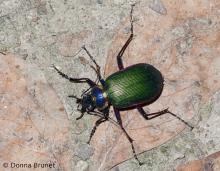
Species Types
Scientific Name
About 2,400 species in North America north of Mexico
Description
Ground beetles are a family of mostly nocturnal or light-shunning beetles that tend to be shiny black and have grooved wing covers. This group also includes tiger beetles, however, which includes many colorful daytime fliers.
Media
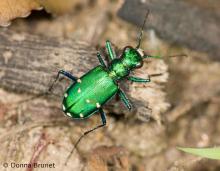
Species Types
Scientific Name
Subfamily Cicindelinae (about 100 species in North America)
Description
Dizzyingly fast runners and fliers, tiger beetles are remarkable, and often very colorful, insect predators.
Media
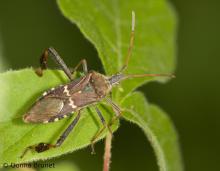
Species Types
Scientific Name
Nearly 90 species in North America north of Mexico
Description
Leaf-footed bugs are a large family of true bugs that are named for the flattened, leaflike extensions that many have on their hind legs. They fly well, and many smell bad when handled. Squash bugs are a famous member of this group.
Media
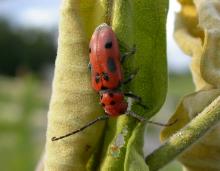
Species Types
Scientific Name
About 1,000 species in North America north of Mexico
Description
Longhorned beetles are elongated and cylindrical, with antennae that are at least half the length of the body — sometimes much longer. The larvae are grubs that bore in wood or other plants. Some are serious pests.
Media
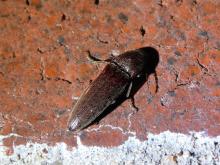
Species Types
Scientific Name
Approximately 1,000 species in North America
Description
Their streamlined shape is distinctive, but the behavior of click beetles is even more unique: Placed on their backs, these beetles flip suddenly into the air with an audible click.
Media

Species Types
Scientific Name
Tabanus, Chrysops, and related genera
Description
Meet the horse fly: Stealthily, one will land on your back, slice your skin, and lap your blood. By the time it starts to hurt and you swat at it, the painful, itchy welt is rising.
See Also



Media

Species Types
Scientific Name
Cisseps fulvicollis
Description
The yellow-collared scape moth is more often “orange-collared.” And whether you think it looks more like a firefly or a wasp, it’s still a moth!
Media

Species Types
Scientific Name
Nearly 150 species in North America north of Mexico
Description
Slim, delicate plume moths are instantly recognizable by their T-shaped silhouette, long legs, and muted shades of tan and brown. It can be hard to separate the various species.
Media

Species Types
Scientific Name
Pyrrharctia isabella
Description
Not many people know the adult Isabella tiger moth when they see one, but we’re all acquainted with its caterpillar, the woolly worm, or woolly bear.
About Land Invertebrates in Missouri
Invertebrates are animals without backbones, including earthworms, slugs, snails, and arthropods. Arthropods—invertebrates with “jointed legs” — are a group of invertebrates that includes crayfish, shrimp, millipedes, centipedes, mites, spiders, and insects. There may be as many as 10 million species of insects alive on earth today, and they probably constitute more than 90 percent all animal species.





















